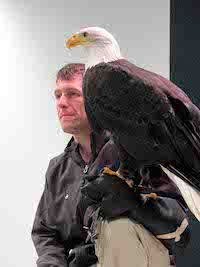 We started our Alaskan journey in Skagway where we stayed for two nights in a comfortable hostel with mostly Americans and one German girl. It took no time at all to make friends and shared traveller’s tales.
We started our Alaskan journey in Skagway where we stayed for two nights in a comfortable hostel with mostly Americans and one German girl. It took no time at all to make friends and shared traveller’s tales.
In the communal kitchen I soon learnt how to make a genuine Alaskan clam chowder and a retro American recipe called Sloppy Joe, mushy minced meat on a hamburger bun. With true Alaskan hospitality our hosts invited us all to join in when they put on a barbecue for their friends.
As in most coastal towns in this part of the world, the cruise ships play a big part. Just 800 people live in Skagway, but 1.27 million tourists come each year, virtually all of them for a day off the cruise ships. During our first two days there were only two but on our last day four arrived so downtown was exceedingly busy with visitors carrying large shopping bags.
To avoid the crowds we went for a 2 km walk along the forested foreshore to the old gold rush cemetery, one of Skagway’s main tourist attractions, and a waterfall close by.
The cemetery was a disappointing jumble of graves, many unmarked. But we did manage to locate the final resting place of Soapy Smith, Skagway’s most infamous citizen who was a rascal and conman. In gold rush days he controlled an underworld of more than 200 gamblers, swindlers and thugs. But good prevailed when surveyor Frank Reid shot it out with him on one of the town’s docks and Soapy was killed instantly.
By late afternoon the crowds had returned to their ships and Skagway was once more a sleepy little town.
From a quilting friend Margreet had heard that ‘Changing Threads’ was a must see so we headed there. While we drooled over the colourful hand-dyed yarns, patterns, kits and quilts created by local Alaskan artists John and Neil snuck off for a few beers in a local bar.
Skagway has the official title of the Garden City of Alaska. It was a pleasure walking around the historic district with its pretty gardens and lovingly restored Victorian homes. But as we had not come to shop there was not much else to see.
From Skagway to Sitka
Sitka was an overnight ferry trip away from Skagway. This was our first Alaskan Ferry experience. In a state where more than half the cities are inaccessible by road the state owned Alaska Marine Highway system, with its fleet of 11 ferries, is the best way to connect these communities.
We’re getting old and wanted to travel in comfort so had booked a large 4 berth cabin with shower, toilet and sitting room. Some of the other passengers chose to sleep on recliner chairs in the lounge, or rolled out their sleeping bags on the plastic sun chairs available on the covered part of the deck. A few hardy souls erected hikers’ tents in the open air.
The food in the on board cafeteria was reasonably priced and quite edible. But there was one American item on the menu called ‘Biscuits and Gravy’ which none of us were game to try!
After a reasonable night’s sleep we sat out on the deck for hours mesmerised by the stunning mountain scenery and saw whales, seals and eagles.
Sitka
We arrived in Sitka in the early afternoon. Our apartment was close to the town centre. Just up the road was St Michael’s Russian Orthodox Cathedral. A dark haired and slightly rotund priest was standing outside to welcome visitors and eating popcorn. Inside another priest was keen to explain the meaning and origin of the artworks which including some beautiful icons. Many had come from Russia in the nineteenth century.
In Sitka the exquisitely made local arts and crafts, jewellery and outdoor clothing proved irresistible. Margreet and I left John and Neil to have a few beers in a local bar while we did a little souvenir shopping. The drivers in this town were incredibly courteous. Each time we looked as if we wanted to cross they stopped to wave us on.
The local library was the place to check our emails. In Alaska libraries are a great place to access the internet for free. They also often have a stack of free books at the entrance which we would choose from, and once read leave at the next destination.
Next to the library was Knitting with Style, a shop with exquisite hand dyed and spun yarns. In the summer they welcome cruise ship visitors but in winter it’s just for the locals again, and not only the women. Some sailors who knit for their families come off the herring boats to replenish their wool supplies.
A highlight of our time in Sitka was a visit to the local raptor sanctuary where they rehabilitate not just eagles but falcons, owls and other raptors. We would see lots of bald headed eagles as we travelled around but seeing them up close made you aware how large and imposing a 6 kilo eagle actually is.
Sitka National Historic Park was established to commemorate the site of the mighty last battle between the Tlingits and Russians in 1804. We walked along a trail lined with ferns, shrubs and flowers to view a collection of totem poles standing like tall sentries in the spruce forest. Many were brought from Haida villages on Prince of Wales Island, and recarved in recent years.
Neil and Margreet hired bikes and rode to Fortress of the Bear, a bear sanctuary along the highway. They took to take some gorgeous pics of orphaned Alaskan brown bear cubs from a viewing platform.
Meanwhile John and I walked a three mile bush trail. They have grizzlies on Baranoff Island where Sitka is situated so I clipped my bear bells on and they jingled as we walked. There was a sparse cover of spruce and a lot of dead wood along the path. But summer was on the way and the berries would soon be ripening. Judging by the paw marks beside the path this was a feeding places for bear and deer. Fortunately we met no bears.









Join the Discussion
Type out your comment here:
You must be logged in to post a comment.